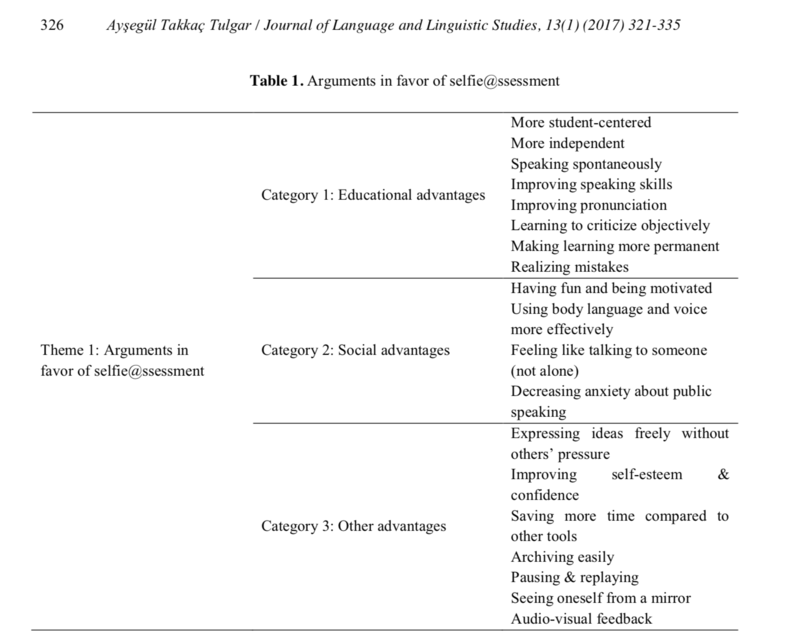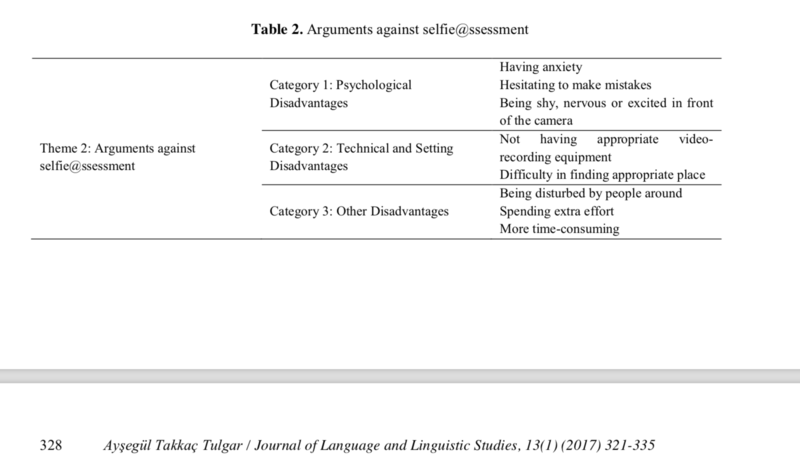Assessment for Learning MOOC’s Updates
Selfie@assesment as an alternative form of (self) assessment
As we’ve seen in this week’s series of videos, assessment can be performed in many different ways and should be considered as learning activities in themselves instead of only being a score for the learner. In “traditional” assessments, the teachers are at the center of the process and they’re the only ones responsible for carrying out the assessment procedure (Tulgar, 2017). In alternative assessment types, the learners are actors along with the teachers and are involved more actively in the assessment process.
The traditional assessment have been criticized because they don’t support student’s critical thinking and metacognitive process (Tulgar, 2017). Many researches and theoretical works have therefore focused on self-assessment (as an alternative form of assessment) and its importance as perceived by the students (Tulgar, 2017). Self-assessment can help students identify what are their strengths and weaknesses and how they are progressing in their learning facilitating “their the sense of ownership, responsibility and autonomy” (Tulgar, 2017). A new form of self-assessment is the so-called selfie@ssessment, which uses modern technologies and the internet to allow students to self-assess their learning
The selfie@ssessment implies that students send to their teachers (via the internet) a selfie-recorded video in which they assess their learning. Tulgar (2017) conducted a study to evaluate the effectiveness, the advantages and disadvantages of this alternative form of assessments. The results of the study show that this technique may be preferable to traditional self-assessment, especially in foreign language courses.
The advantages and disadvantages of the selfie@ssessment, from the students’ perspective, are resumed in the following pictures (taken from Tulgar’s article, 2017) :
The study concludes by pointing out that this form of assessment is only effective if students are taught how to conduct the self-assessment, what they are expected to do and what are the criteria they should use to evaluate themselves. If these criteria are met, students can focus on a formative evaluation of their learning instead of paying attention to their score.
SOURCES:
Tulgar, A. T. (2017). Selfie@ ssessment as an alternative form of self-assessment at undergraduate level in higher education. Journal of Language and Linguistic Studies, 13(1), 321-335.



